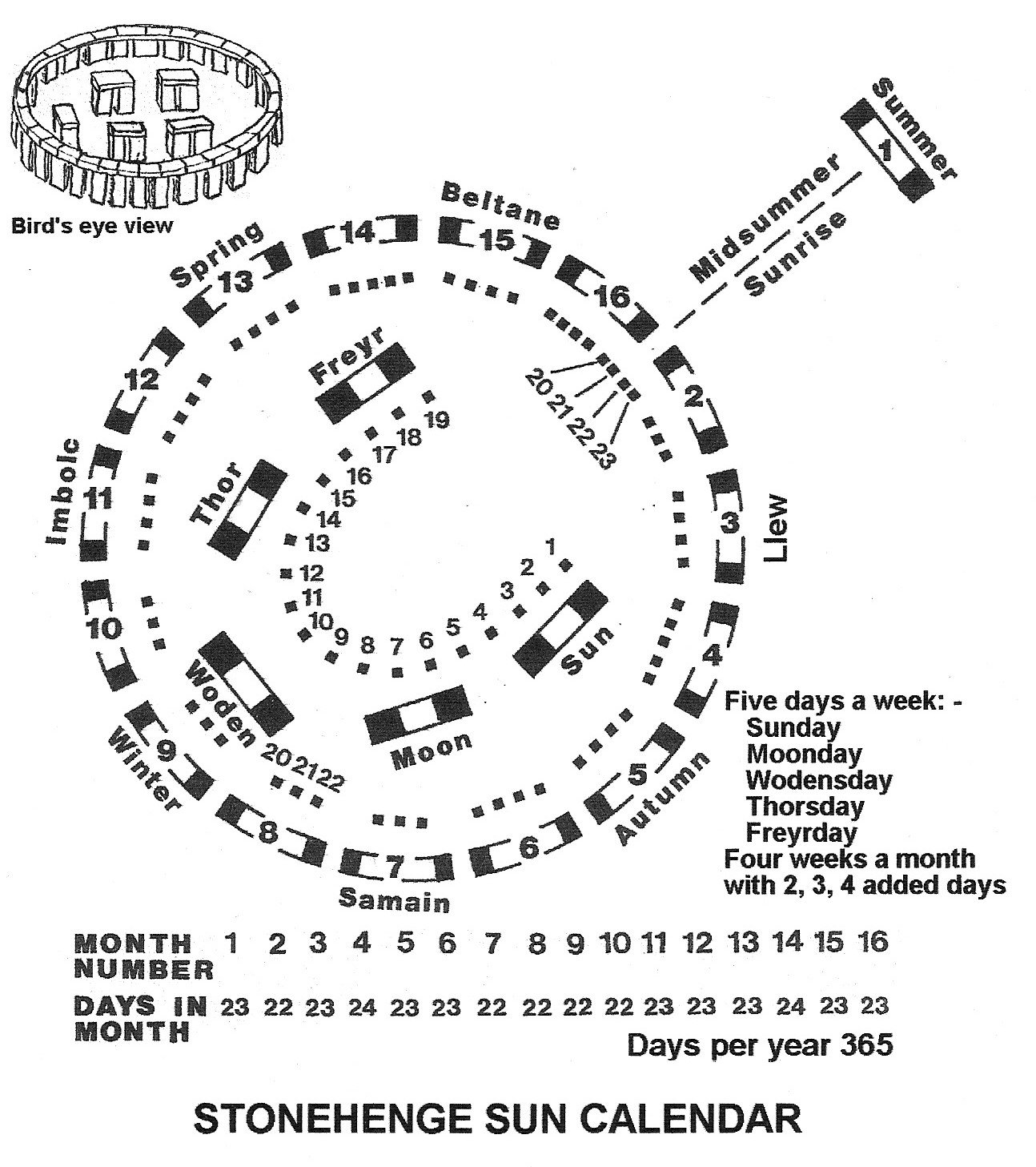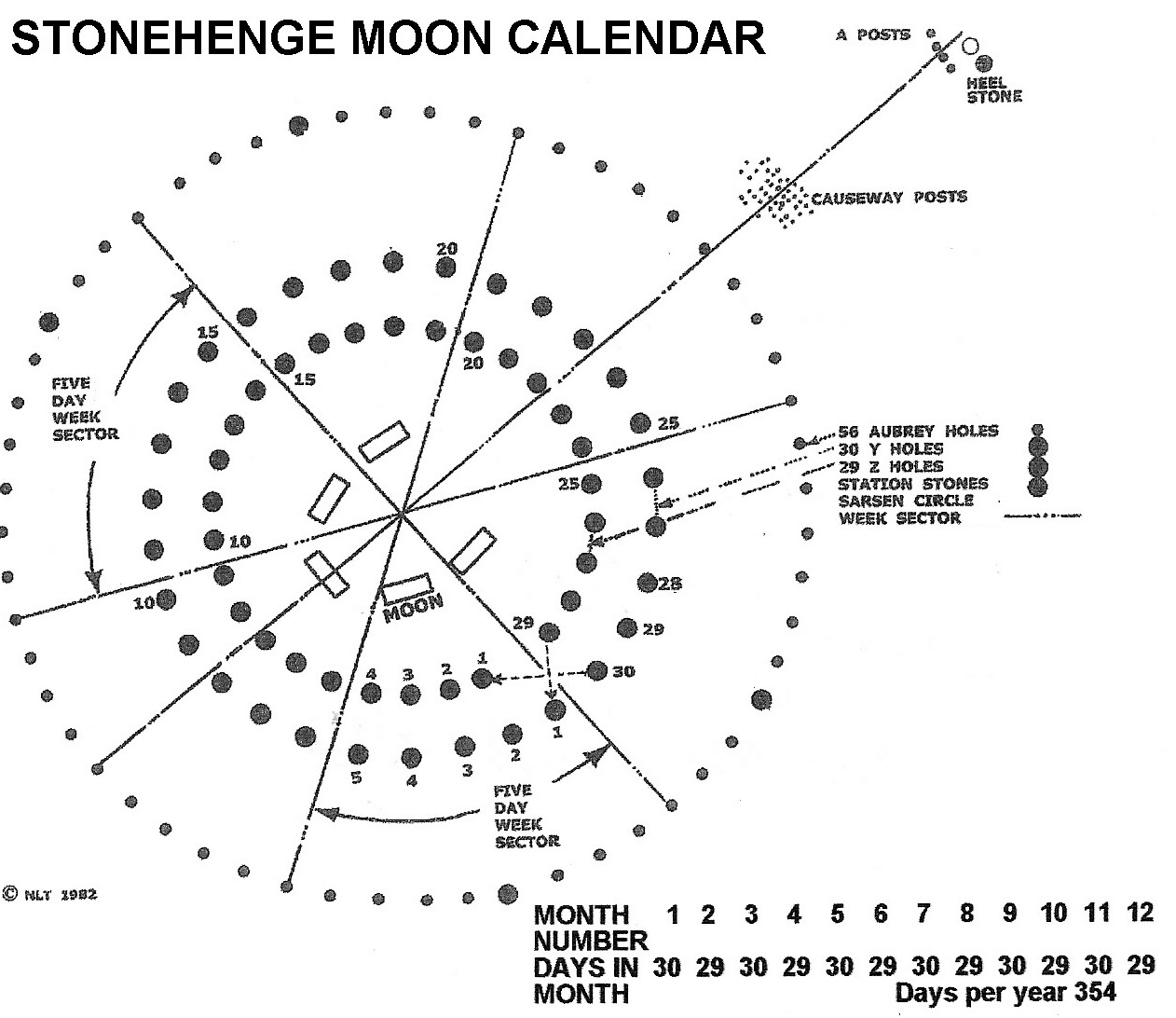Stonehenge Sacred Symbolism –by Neil L Thomas
Black Clouds - 2250 BC - World Chaos
Sodom and Gomorrah - Brimstone and Fire
Ancient beliefs in Ireland, Britain, Denmark, Sweden, Norway, Iceland, France and Germany included a Stonehenge Sun calendar: sixteen months a year, four week months, five day weeks.
Product details
Paperback: 320 pages
Publisher: Self-published
ISBN: 978-0-9878282-5-4
Trim size: 219 x 297 mm pbk
Synopsis
Stonehenge Sacred Symbolism reveals the Bible’s Old Testament tale of the disappearance of Sodom and Gomorrah actually occurred about 2250 BC. Founded upon scientific atmospheric data, glacier ice cores and petroleum industry records, see why India, China, the Americas, Britain, Malta, Egypt, Palestine, Jordan, Sumeria all suffered starvation, cold and drought conditions about the same time. Empires collapsed and humanity reverted to a basic frugal existence.
The sea-linked peoples of the north-west: Ireland, Britain and western Europe have much in common. Pre-historic deities, legends and myths, Sun and Moon calendars, feet fathoms and furlongs, all are revealed in Stonehenge Sacred Symbolism.
Stonehenge Sun Calendar 
The pre-historic peoples of Ireland, Britain, Denmark, Sweden, Norway, Iceland, France and Germany exhibit similar elements of ancient beliefs and a Sun calendar: sixteen months, four weeks a month, five days a week, 365 days a year. Days could have been named for the ancient deities Sun, Moon, Woden, Thor and Freyr.
In the twenty-first century, we continue to mark eight annual events in the ancient Sun calendar:
Two solstice = summer winter
Two equinox = spring autumn
Llew = harvest,
Samain = Halloween,
Imbolc = lambing and
Beltane = Mayday.
Stonehenge Moon Calendar 
The Stonehenge Moon calendar featured two rings of pits dug into the subsoil. Back-filled with white chalk lumps, thirty Z Holes formed the outer ring, twenty-nine Y Holes formed an inner ring.
A Moon month is 29½ days, 59 days in two months. From the centre, imaginary lines drawn between the trilithons form six segments equal to six weeks of five days, perhaps given the same day names as the Sun calendar. Alternate months had only four days in the fourth week. Six counts around fifty-nine Y and Z Holes equalled 354 days, a twelve-month Moon year.
Literacy & Numeracy
Ireland’s ancient monuments at Knowth and Newgrange c.3500 BC show the earliest comprehensive writing and arithmetic abilities in mankind’s history, thirty-six or so symbols employed in petroglyphs demonstrated the Sun and Moon calendars. Counts of thirty-three had symbolic meaning. The world's four major religions continue to employ thirty-three to imply or infer a sacred state or an ultimate heavenly situation.
Right-angled triangles, Pi or π = 22/7, odd numbers and their symbolism were employed in the north-west during the fourth millennium BC. The first millennium BC Greek philosophers Pythagoras, Archimedes and Euclid probably inherited their mathematical knowledge from the Stonehenge people of ancient Britain.
Avebury, England
England’s largest ancient monument at Avebury was built about 2500 BC. Three times thirty-three massive stones enclosed a fertility shrine, a justice court, a good health symbol. Four entrances crossed the encircling ditch and embankment. These features are mirrored in the Icelandic Creation Of The World myth told in written form about 1200 AD.
The Long Man of Wilmington
Linear measures, the Celtic foot, the short yard and faethm [fathom] the furlang [furlong] were known throughout history and in Stonehenge times. The prehistoric Long Man of Wilmington figure on a hillside in Sussex, England is thirty-three faethms equal to one furlang from head to toe. The first cricket game pitch was ten faethms long. Baseball and cricket have this common origin on the south coast of England.
Author Dr Neil L Thomas, a chartered engineer in the Australian oil and gas industry, made field trips to Ireland, Wales, England, Scotland, the Netherlands, Denmark, France, the Middle East, Egypt, India, China, Canada and the USA. Years of research led to an understanding how the myths and folklore of north-west European peoples complement prehistoric monuments, the evidence fits together like a jigsaw.
--ooOOoo--
OTHERS SAY: -
“In 1977 Dr Thomas like many Australians with Celtic surnames before him, went searching for his ancestors, only to stumble across an entirely pre-Celtic civilisation. His casual interest rapidly deepened, after twelve years of intensive scholarship he presented a brilliant PhD thesis – perhaps even definitive – in its interpretation of Britain and Ireland’s Neolithic culture. From the vantage point of his training in engineering and mathematics, Dr Thomas obtained a fresh perspective of the design and function of the megalithic circles in Britain and Western Europe. Dr Thomas believes these ancient Britons worshipped the Sun and Moon, and probably gods corresponding to the three primary gods of the Norse pantheon – Odin Thor and Freyr.
Although Stonehenge is the best-known of Britain’s Neolithic relics, a much larger stone circle lies to the north-west, surrounding the village of Avebury. From its grand design, and its relationship to other megalithic sites in the region, Dr Thomas believes Avebury was the most significant of all the Neolithic temples. Avebury’s massive ring of stones, some weighing up to 45 tonnes, originally numbered 99 – thrice the sacred number of 33. If Dr Thomas is right, Avebury was ancient Britain’s spiritual capital, the Neolithic equivalent of Jerusalem"
Graeme O’Neill, past Science Correspondent of ‘The Age’ broadsheet newspaper, Melbourne.
“Dr Neil Thomas, an engineer turned classical scholar, says Stonehenge and other prehistoric circles in Europe and Ireland were built to observe the annual cycles of the Sun and the Moon, and functioned as giant calendars. He believes that 4500 years ago the ancient Britons had: -
- Discovered the special properties of right-angled triangles, supposedly defined by Pythagoras about 550 BC.
- Known about the [22/7] relationship between a circle’s circumference and its diameter, pi.
- Devised a system of symbolic writing that predated the cuneiform script of Sumeria and the hieroglyphics of ancient Egypt by 1500 years, and
- Developed a reliable system of measuring distances and angles.
“Among his original insights, Dr Thomas has described the likely role in pre-Celtic society of the enigmatic Long man of Wilmington, a giant figure holding two staves, carved into the chalk of a hillside in Sussex. Dr Thomas argues, on the basis of the ancient units of measurement that recur in Britain’s megalithic structures and the precision of these measurements, that the Long Man was a surveyor who is holding the tools of his profession. He has calculated that the staves were used to measure a 2.073 metre length, the megalithic rod. The Long Man measures 33 megalithic rods from head to toe. Dr Thomas says the Long Man’s height is significant because when multiplied by 33 it yields another recurrent unit of distance: the megalithic mile [the country mile].” Ed.
Editor, the Monash University Research Review.